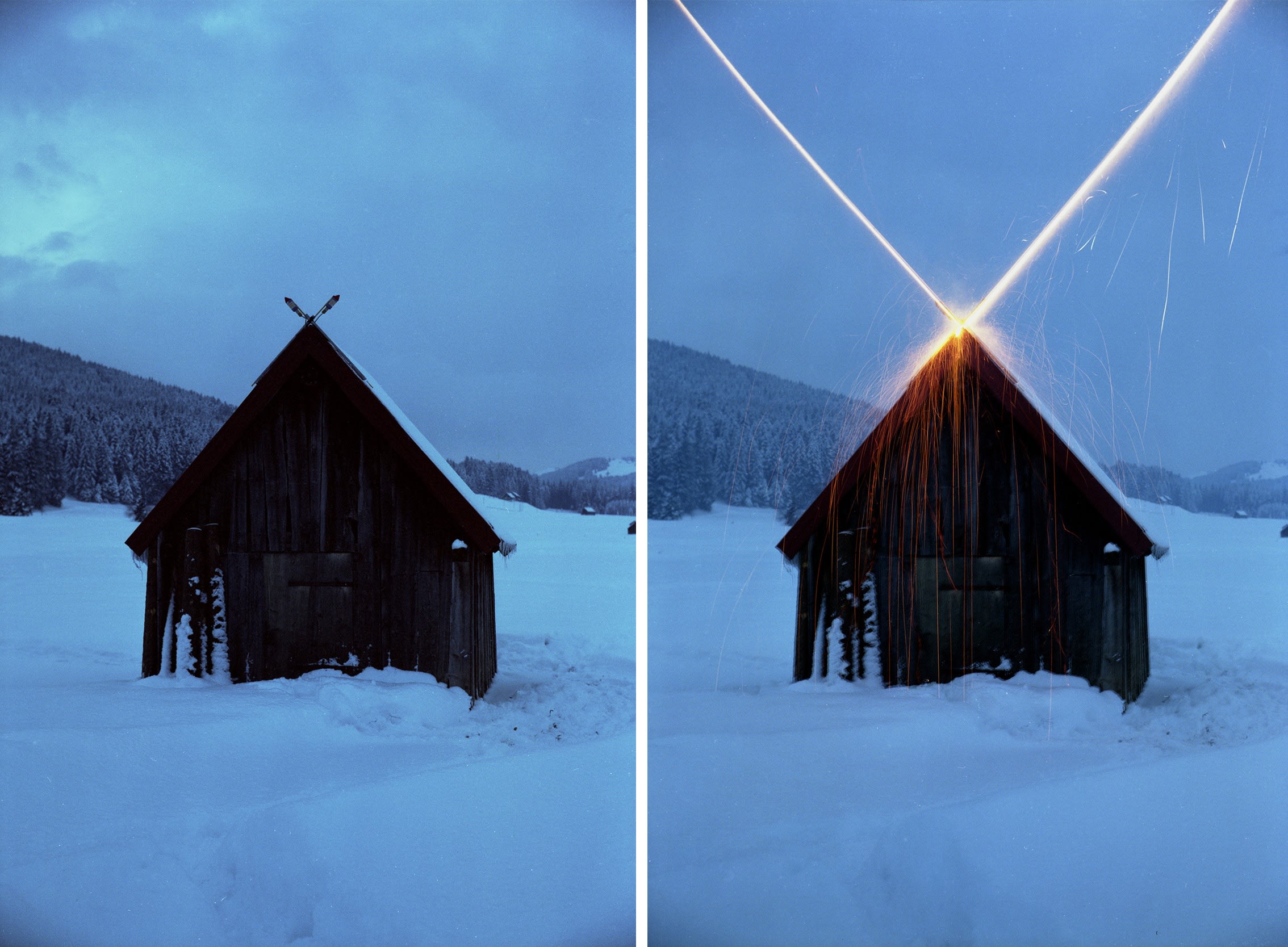CHRIS CRAN, JESSICA EATON, MARCEL VAN EEDEN, JASON DE HAAN, HAROLD KLUNDER, NIALL MCCLELLAND, GUIDO MOLINARI, JENNIFER MURPHY
Clint Roenisch is pleased to present a group show about optics, colour, geometry, perception and credence. The exhibition includes sculpture, drawing, painting, textiles and works on paper and also serves to introduce the photographs of Jessica Eaton to the gallery.
The exhibition opens with Chris Cran’s oil painting, “Green Photographer,” a monochrome portrait done in strictly horizontal or vertical brushstrokes that causes the features of ‘the photographer’ depicted to switch from negative to positive as the viewer moves past. Cran uses oil paint to mimic the photographic process of harnessing light to convert film to print. Jessica Eaton uses a wide array of experimental, analogue-based photographic techniques such as colour separation filters, multiple exposures, dark slides and in-camera masking to build images on sheets of 4×5 film that often evoke the paintings and wall-works of Josef Albers and Sol Lewitt. Her two works here, “cfaal 78” and “Interpolation Dramatization 4,” address fundamental properties of photography such as light, chance, duration, illusion and colour theory. Adjacent to Eaton’s constructed photographs is Jason de Haan’s “Untitled Cube (Mirror Box Containing the Northern Lights).” This is a cube lined with mirrors that de Haan made in northern Canada and then used one night to “capture” a portion of the aurora borealis. Thus where Eaton optically manipulates the exterior of cubes and blocks to suggest illusory colours and forms, de Haan seals an optical phenomena inside one. Both Eaton’s images and de Haan’s sculpture optimistically strain the viewer’s credulity. Two drawings by Marcel van Eeden are positioned nearby: one is a view of the Kaaba – the granite cube-shaped building in Mecca, Saudi Arabia – and the other a hard-edged black and white abstraction of stark, intersecting volumes. In this pairing geometry and faith seem to intersect. Across from the van Eeden drawings a square silkscreen by Guido Molinari presents blocks of blue-black colours so closely related that the eye begins to perceive subtle motions of expansion and retraction within the pattern. In the rear gallery is a work on paper – but called a Tapestry – made from the folding of a large black photocopy by Niall McClelland, a young artist who excels at coaxing elegant geometric and spatial inquiries from very economical materials. Diagonally opposite is “Munari’s Eyes,” a pair of coloured spirals made of satin cords by Jennifer Murphy that references the visual wit of Bruno Munari, the late Italian Futurist and graphic designer. The exhibition ends with a rare and early suite of colour designs for sailboat sails from 1975 by the painter Harold Klunder. The artist, so renowned for the biomorphic vocabulary of forms in his actual canvasses, here unfurls dazzling geometric arrangements of bars and rays in these imagined sails.








